Ed van Veen
Ed van Veen
Adjunct Assistant Professor
Vice Chair of Postdoctoral Affairs
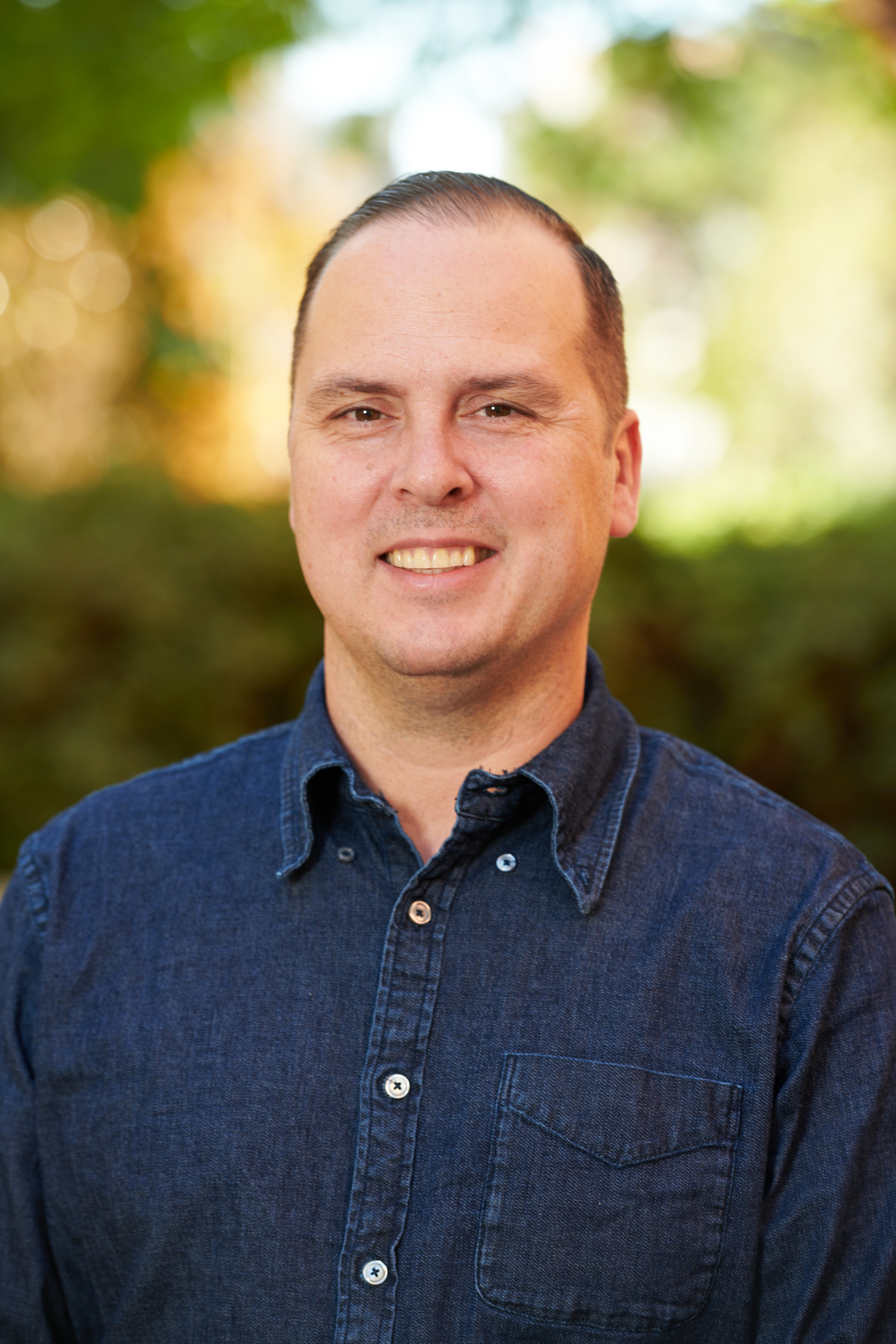
Email: vanveen@ucla.edu
Office: TBD
Phone: TBD
Website: http://vanveen.xyz
Biography
I moved from British Columbia to California when I was in the first grade, and since then have loved being a part of the California public school system. I earned my B.S. at UC Davis where I double-majored in genetics and applied mathematics and worked in the lab of Scott Hawley studying meiotic recombination in drosophila. I did my Ph.D. in molecular biology at M.I.T. with Frank Gertler, studying how neurons sense extracellular cues during the development of the nervous system. I came back to California for my post-doctoral work, studying mouse models of cancer in the lab of Martin McMahon at UCSF. I am exceptionally proud of now having the opportunity to contribute to the world’s best system of public universities as a Professor in the department of Integrative Biology and Physiology at UCLA.
Research Interests
My lab is interested in how the nervous system interacts with and responds to cancer and cancer therapeutics. Currently we are focusing on the selective estrogen receptor modulator, tamoxifen, which is standard of care therapy for many breast cancer patients. Tamoxifen prevents tumor initiation or recurrence in up to 50% of patients. Tamoxifen is available as an inexpensive generic medication and protects bone density, making it the most widely prescribed chemotherapeutic worldwide. Unfortunately, tamoxifen also conveys harmful side effects that limit patient treatment initiation and compliance, leading to countless breast cancer deaths. The biggest complaint among women taking tamoxifen is the experience of temperature dysregulation, specifically hot flashes. Our lab has recently demonstrated that tamoxifen causes temperature dysregulation via estrogen sensitive neurons in the hypothalamus, in mice. We are now probing the mechanisms of tamoxifen induced hot flashes and will continue to work to identify adjuvant therapies that improve patient compliance and quality of life. This is an important issue in healthcare equity as black women have significantly higher breast cancer associated mortality rates than white women. Black women are generally more likely to experience hot flashes and less likely to initiate and/or complete tamoxifen treatment, contributing to unequitable health outcomes. We believe that recognizing, understanding, and treating tamoxifen-induced hot flashes will increase quality of life for many breast cancer patients, and contribute to more equitable healthcare treatment.
Education
B.S. Genetics, Applied Mathematics. University of California, Davis, 2001
Ph.D. Molecular Biology. Massachusetts Institute of Technology, 2012
Selected Publications
Zhang, Z., Park, J. W., Ahn, I. S., Diamante, G., Sivakumar, N., Arneson, D. V., Yang, X., van Veen, J. E.# and Correa, S. M.# #: Corresponding authors.
Estrogen receptor alpha in the brain mediates tamoxifen-induced changes in physiology in mice. eLife 2021;10:e63333
Zhang, Z., Reis, F. M. C. V., He, Y., Park, J. W., DiVittorio, J. R., Sivakumar,N., van Veen, J. E., Pereira, S., Shum, M., Anderson, S., Nichols, I., Paul, K. N., Liesa, M., Ajijola, O. A., Xu, Y, Adhikari, A., and Correa, S. M.
Estrogen-Sensitive Medial Preoptic Area Neurons Coordinate Torpor in Mice, Nature Communications, 11:6278, 2020.
Prokop, J. W., Chhetri, S., van Veen, J. E., Chen, X., Underwood, A. C., Uhl, K., Dwinell, M. R., Geurts, A. M., Correa, S. M., and Arnold, A. P.
Transcriptional analysis of the multiple Sry genes and developmental program at the onset of testis differentiation in the rat, Biology of Sex Differences 11, Article number: 28 (2020).
van Veen, J. E., Kammel, L. G., Bunda, P. C., Shum, M., Reid, M. S., Massa, M. G., Arneson, D., Park, J. W., Zhang, Z., Joseph, A. M., Hrncir, H., Liesa, M., Arnold, A. P., Yang, X. and Correa, S. M.
Estrogen receptor alpha signaling in the ventromedial hypothalamus establishes a sexually dimorphic regulatory node of energy expenditure, Nature Metabolism, 2020.
– 2020 UCLA Life Science Excellence Award for Outstanding Research Publication
van Veen, JE., Scherzer M., Boshuizen, J., Chu, M., Liu, A., Landman, A., Green, S., Trejo, C., and McMahon M.
Mutationally-activated PI3’-kinase-α promotes de-differentiation of lung tumors initiated by the BRAFV600E oncoprotein kinase, eLife 2019;8:e43668
Lee, S. D., Priest, C., Bjursell., M., Gao, J., Arneson, D. V., Ahn, I. S., Diamante, G., van Veen, J. E., Massa, M. G., Calkin, A. C., Kim, J., Andersén, H., Porritt, M., Carreras, A., Ahnmark, A., Seeliger, F., Maxvall, I., Eliasson, P., Althage, M., Åkerblad, P., Lindén, D., Cole, T. A., Lee, R., Boyd, H., Bohlooly-Y, M., Correa, S. M., Yang, X., Tontonoz, P., and Hong, C.
IDOL regulates systemic energy balance through control of CNS VLDLR expression. Nature Metabolism, October 28, 2019.
McConnell, R., van Veen, JE., Vidaki, M., Kwiatkowski, A., Meyer, A., Gertler, F.
A requirement for filopodia extension toward Slit during Robo-mediated axon repulsion. The Journal of Cell Biology. 2016, 213(2), 261-274.
Ronald Cooper
Ronald Cooper
Continuing Senior Lecturer
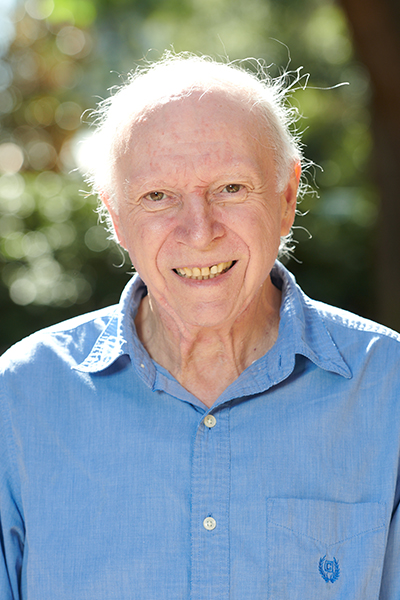
Email: rcooper@physci.ucla.edu
Office: 323 Hershey Hall
Phone: (310) 206-3201
Biography
I started my career as a Biochemist (B.Sc and Ph.D. from Bristol University, UK), working in two areas of metabolism (insulin secretory mechanisms, and regulation of the enzyme pyruvate dehydrogenase). After postdoctoral work at UC Davis (Dept of Biochemistry), I moved to the University of Pennsylvania (Dept of Biochemistry & Biophysics), where I carried out research on calcium signaling in liver metabolism, and received a Career Development Award from the Juvenile Diabetes Association. These studies continued at UC Davis (Dept of Human Physiology) and at the University of South Carolina School of Medicine (Dept of Pharmacology), where I mentored two Ph.D. students, both of whom went on to do postdoctoral work at NIH. After moving to UCLA in 1995 (Dept of Physiological Science), I focused on teaching, and setting up the Laboratory in Physiological Science (PS 111L class), which is a requirement for the major. Additionally I taught LS2 (Cells, Tissues & Organs class), and currently now teach 111L and LS7C (Physiology & Human Biology), as well as classes for UCLA Extension. I received a UCLA Distinguished Teaching Award in 2012, and Distinguished Instructor Award from UCLA Extension (2015). Overall, I believe my interdisciplinary research in cell signaling, spanning not only physiology, but also biochemistry and pharmacology, brings a broad perspective to my teaching role in the department.
Education
B.S., Biochemistry, Bristol University 1969
Ph.D., Biochemistry, Bristol University 1974
Selected Publications
Cooper, R.H., Randle, P.J. and Denton, R.M. (1975): Stimulation of phosphorylation and inactivation of pyruvate dehydrogenase by physiological inhibitors of the pyruvate dehydrogenase reaction. Nature (London) 257:808-809.
Williamson, J.R. and Cooper, R.H. (1980): Regulation of the Citric Acid Cycle in Mammalian Systems. FEBS Lett. 117:K73-K85.
Williamson, J.R., Cooper, R.H., Joseph, S.K. and Thomas, A.P. (1985): Inositol trisphosphate and diacylglycerol as intracellular second messengers of hormone responses in liver. Am. J. Physiol. 248:C203-C216.
Abel, F.L., Cooper, R.H. and Beck, R.R. (1993): Use of fluorescent latex microspheres to measure regional coronary flow. Circulatory Shock 41: 156-161.
Beeler, J.F. and Cooper, R.H. (1995): Regulation of hepatocyte plasma membrane a1-ed adrenergic receptors by 4ß-phorbol 12-myristate 13-acetate. Biochem. J. 305: 73-79.
Joseph Esdin
Joseph Esdin
Continuing Lecturer
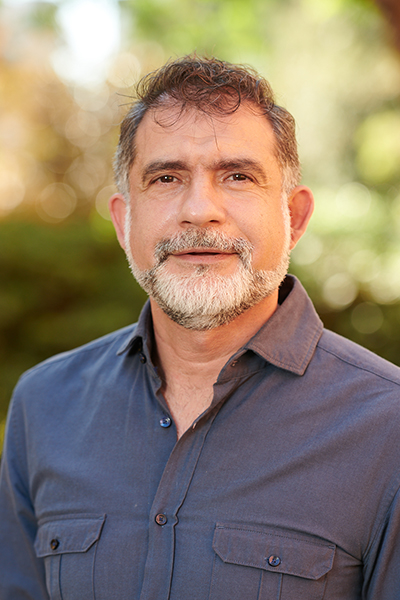
Email: yezzeddi@ucla.edu
Office: 322 Hershey Hall
Phone: (310) 825-4118
Biography
My interest in teaching began in my upper division courses as an undergraduate and continued into my doctorate program. Departmental academic requirements allow doctoral students to teach undergraduate courses for two quarters during the academic career. Engaging and interacting with the students made teaching a gratifying and rewarding experience both on the first day, and ever since. The idea of sharing my knowledge and expertise on the subject of my passion with students on the path to becoming professionals inspired me to pursue a career in an academically challenging teaching environment. I currently teach Life Sciences 7C (Physiology and Human Biology), PS 111A (Foundations in Physiological Science), PS 136 (Cardiovascular Diseases), PS 166 (Animal Physiology), and PS 5 (Diet and Exercise). In addition, I do teach classes through UCLA Extension: PS 408 (Pathophysiology of Cardiovascular Diseases), PS 410 (Pulmonary Physiology), PS 415 (Endocrinology), PS 425 (Animal Physiology), and PS 435 (Neurophysiology: How the Brain Thinks). I also work with UCLA undergraduates through the TEACH program to provide mentoring and health education to children of low-income families.
Research Interests
My research interest concerns elucidating the cellular mechanisms that underlie long-term habituation of the gill-withdrawal reflex of the marine snail Aplysia californica. To address the question I developed a reduced preparation that exhibits short term habituation (STH) and long-term habituation (LTH) of gill withdrawal. This preparation allowed selective infusion of drugs to localized areas in the central nervous system. Using pharmacological techniques I reinforced a mechanistic analysis of LTH. I showed that this form of habituation lasts for up to 12 hrs and depends on protein synthesis, the activation of protein phosphatase, and the activation of postsynaptic glutamate receptors. The results from my experiments indicate that LTH of gill withdrawal cannot be due to an exclusively presynaptic mechanism, such as homosynaptic depression, as it was previously believed. I also investigated further the cellular mechanism of the gill-withdrawal reflex. I have examined the potential role of gene expression in this from of learning. I have shown that LTH is not expressed when RNA synthesis blockers are applied. In addition, I tested the role of specific proteins, such as calcineurin, to see what effect they have on this learning phenomenon. Calcineurin blocker application blocked LTH.
Education
B.S., Physiological Science, University of California, Los Angeles 1999
M.S., Physiological Science, University of California, Los Angeles 2001
Ph.D., Physiological Science, University of California, Los Angeles 2004
Selected Publications
Esdin J, Roberts AC, Song MY, Dearinger AD, Moridzadeh N, Lu ED, et al. (2011) Habituation of the C-Start Response in Larval Zebrafish Exhibits Several Distinct Phases and Sensitivity to NMDA Receptor Blockade. PLoS ONE 6(12): e29132.
Esdin J, Pearce K, Glanzman DL. (2010) Long-term habituation of the gill-withdrawal reflex in aplysia requires gene transcription, calcineurin and L-type voltage-gated calcium channels. Front Behav Neurosci. 2010 Nov 29;4:181.
Ezzeddine Y, Glanzman DL (2003) Prolonged habituation of the gill-withdrawal reflex in Aplysia depends upon protein Synthesis, protein phosphatase activity, and postsynaptic glutamate receptors. J Neurosci. 2003 Oct 22;23(29):9585-94.
Anthony Friscia
Anthony Friscia
Associate Teaching Professor
Director of the UCLA Cluster Program
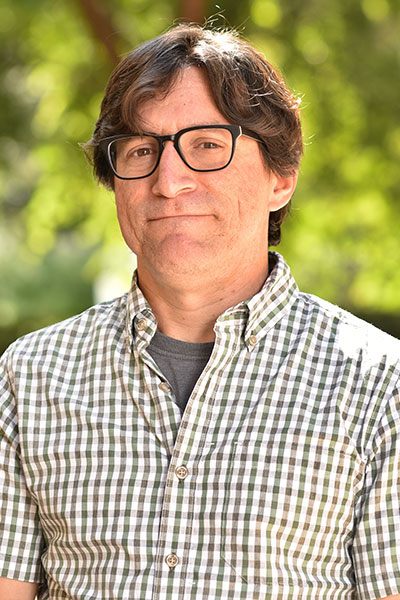
Email: tonyf@ucla.edu
Office: 329 Hershey Hall
Phone: (310) 206-6011
Biography
Born and raised in Chicago, I attended Washington University in St. Louis, where I majored in Anthropology and Physics. After going on my first paleontological dig the summer (in Utah) after graduation, I attended Kent State University and received an M.A. in Anthropology. While there I got to do field work in Pakistan looking for fossil whales. I came to UCLA in 1998 as a Ph.D. student in Ecology & Evolutionary Biology under Dr. Blaire Van Valkenburgh, and received my degree in 2005. While a graduate student, I began teaching the summer anatomy dissection course for IBP and TAing in the UCLA Cluster Program. After graduation I spent a couple of years as a “freeway” professor, before carving out a position at UCLA where I teach most of the undergraduate human anatomy courses for IBP and in the Cluster Program. I am currently also the Director of the UCLA Cluster Program, and work with our faculty, TAs, and campus partners to create this valuable experience for incoming UCLA freshmen.
Research Interests
My research program has focused on the evolution of early Tertiary mammals and their diversification into modern families, using extensive anatomical and functional knowledge as a basis for comparison. Specifically I have worked on mammalian carnivores, both extinct and extant. As a comparative base I have built a large collection of pictures and skull/dentition measurements of living small carnivorans, including members of the Procyonidae (raccoons and their relatives), Mustelidae, (weasels, badgers, otters, and their relatives), Mephitidae (skunks), Herpestidae (mongooses), and Viverridae (civets and their relatives). I use this database to study the dietary specializations of these groups and the morphological correlates of diet. These are a diverse group of animals, whose diets run the gamut from hypercarnivores, specializing only in meat (such as the weasels), to almost dedicated frugivores (such as some members of the raccoon family). The goal is to represent the entire ecological range of these poorly studied taxa. I have used the database of living carnivores as a basis for studying the fossil record. Early mammalian carnivores (both members of the modern order Carnivora, as well as the extinct order Creodonta) are similar in body size to the modern small taxa. By understanding the morphological correlates of ecology in living taxa I can then extrapolate to investigate the lifestyles of the fossil taxa. The first thing that drew me to research was paleontological fieldwork. I plan to continue this as part of my further research and involve students in the process. I have a partnership with researchers from Midwestern University, the San Diego Museum of Natural History and Lamar University to collect and teach in the Uinta Basin in Utah. This research includes expanding our collecting area, obtaining better stratigraphic control on our localities, and examining change in the paleoecology of the Basin across time. This will also incorporate a large field school component which would involve students in both collecting and subsequent research on the uncovered specimens. In addition to field work here in the US, I have research collaborations with various colleagues doing research in Sub-Saharan Africa. My research there focuses on a key time period in the history of African animals, right at the transition from archaic groups to taxa we would recognize today. Part of this turnover was the appearance of the first true carnivorans in Africa around 20 million years ago. We have collected specimens of the very first of these taxa to reach Africa, and the question of why these particular species were the first to enter Africa, and how they fit into the endemic carnivore community, is rich in interesting research directions. I also have research interests in looking at broad evolutionary trends across carnivorous mammals, functional anatomy of mammals and birds, the taphonomy of the La Brea tar seeps, and primate paleontology.
Education
B.A., Anthropology/Physics, Washington State University in St. Louis 1994
M.A., Anthropology, Kent State University 1998
Ph.D., Biology, University of California, Los Angeles 2005
Selected Publications
Gunnell, G.F., D.M. Boyer, A.R. Friscia, S. Heritage, F.K. Manthi, E.R. Miller, H.M. Sallam, N.B. Simmons, N.J. Stevens, E.R. Seiffert, “Fossil lemurs from Egypt and Kenya reveal an African origin for Madagascar’s aye-aye”, Nature Communications, 9 : 3193- (2018) .
Friscia, A.R, “The Origin of Higher Taxa: Palaeobiological, Developmental, and Ecological Perspectives”, Quarterly Review of Biology, 92 : 189- (2017) .
Brown, C., E. Curd, A. Friscia., “An Actualistic Experiment to Determine Skeletonization and Disarticulation in the La Brea Tar Seeps”, Palaios, 32 : 119-124 (2017) .
Murphey, P.C., Townsend, K.E.B., Friscia, A.R., Westgate, J., Evanoff, E., Gunnell, G.F., “Paleontology and stratigraphy of middle Eocene rock units in the southern Green River and Uinta Basins, Wyoming and Utah”, Geology of the Intermountain West, 3 : 1-53 (2017) .
A. Friscia and R. Dunn., “Uintan creodonts from the Uinta Basin, with a description of the post-cranial skeleton of Oxyaenodon”, Journal of Vertebrate Paleontology, (2016) .
Bodony, D., L. Day, A. Friscia, L. Fusani, A. Kharon, G. Swenson, M. Wikelski, B. Schlinger., ” Determination of the Wingsnap Sonation Mechanism of the Golden-Collared Manakin (Manacus vitellinus)”, Journal of Experimental Biology, 219 : 1524-1534 (2016) .
A.R. Friscia, G.D. Sanin, W.R. Lindsay, L.B. Day, B.A. Schlinger, J. Tan, M.J. Fuxjager, “Adaptive evolution of a derived radius morphology in manakins (Aves, Pipridae) to support acrobatic display behavior”, Journal of Morphology, 277 : 766-775 (2016) .
A. Friscia, “Ecological Trends and Replacement in the Carnivorous Mammals of Africa across the Paleogene/Neogene Boundary”, Journal of Vertebrate Paleontology, (2015) .
A. Friscia and C. Brown, “An actualistic experiment to examine skeletonization and disarticulation in the La Brea tar seeps”, Journal of Vertebrate Paleontology, (2014) .
G. Slater and A. Friscia., “Where should we expect to find early bursts of trait evolution? A case study using Carnivora”, Journal of Vertebrate Paleontology, (2013) .
Tama Hasson
Tama Hasson
Adjunct Professor
Assistant Vice Provost for Undergraduate Research
Director of the Undergraduate Research Center
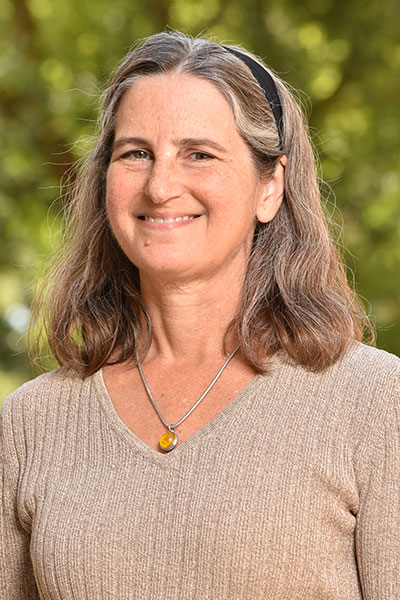
Email: thasson@college.ucla.edu
Office: 2124 LS
Phone: (310) 825-9277
Website: http://sciences.ugresearch.ucla.edu/
Biography
Dr. Hasson is the Assistant Vice Provost for Undergraduate Research at UCLA.
Research Interests
Words like assessment have become part of the necessary lexicon of Program Directors running undergraduate research programs and other student development programs designed to serve underrepresented students. National agencies that fund student programs now mandate assessment in their Requests for Applications. To meet this mandate, mechanisms need to be designed to measure and quantify the goals of a program and to identify which program components are contributing effectively to student success. ASSESSMENT OF SCIENCE RETENTION PROGRAMS: The Leaky Pipeline The nation’s competitiveness is intimately linked to innovation in science and technology. However minorities are not being retained in science. While Hispanics constituted 17% of the 18-24 year olds in the US in 2008, only 9% of the bachelor’s degree recipients in science, technology and mathematics (STEM) in 2009 were awarded to Hispanics. This percentage decreases as you look at MS and PhD recipients. And significantly only 3% of the STEM workforce in the US for the period 2004-2010 was Hispanic. My research has focused on dissecting this leaky pipeline. Why are minorities not succeeding in science? The first question was how to best evaluate the programs on the UCLA campus that strive to improve retention of minorities in STEM fields. Dr. Linda DeAngelo (Former Assistant Director for Research at the Higher Education Research Institute) and I completed a study as to the best methods to create control groups to assess the impact of minority retention programs. We used as the study subject a program administered by the Undergraduate Research Center-Science called PEERS (Program for Excellence in Education and Research in the Sciences) (DeAngelo & Hasson, 2009). PEERS is a two-year program that supports underrepresented physical and life science majors that have had more than typical life challenge hurdles to overcome to reach UCLA. PEERS’ goal is to bring these students into the scientific community by helping them maintain a science major and encouraging them to try undergraduate science research. The PEERS program involves individualized academic and career counseling, “Pathways in Science” seminars tailored to freshman and sophomore needs, collaborative learning workshops that accompany their introductory math, chemistry and physics courses, research seminars by UCLA professors, and the opportunity to both be exposed to and to be deeply involved in undergraduate research. Assessing a program like PEERS is difficult because the program encompasses so many different components. In our study we show that by using post-matching control groups we can assess both short-term outcomes (grades) and intermediate-term outcomes (entry into research). In the last five years, in collaboration with Dr. Marc Levis (Director, Center for Educational Assessment), his graduate student Brit Toven-Lindsey, and Dr. Paul Barber (EEB Department), we have followed up on the above study with a longitudinal controlled study of PEERS (Toven-Lindsey, B., Levi-Fitzgerald, M., Barber, P. and T. Hasson (2015) Increasing persistence of undergraduate science majors: A model for institutional support of underrepresented students. CBE – Life Sci. Educ. 14: 1-12). Focusing on students that entered UCLA in 2009 and 2010, we compared PEERS students to similarly prepared students during their first two years at UCLA. Our study compared the PEERS group to three different control groups, thereby eliminating selection bias and other confounding factors. We found that PEERS students take more science classes in their first two years (so are more likely to graduate on time), earn better grades in those science classes, have a higher overall GPA and are more likely to be in a science major at the beginning of their third year. This benefit is seen whether PEERS students are compared to a propensity matched control group of similarly prepared students, or better prepared students with high incoming Math SAT scores. Engagement in PEERS clearly improves academic success and retention in science, eliminating the achievement gap for URM and other underserved science students. Role on publication: I served as the leader for this project. I directed Ms. Toven-Lindsey, managed creation of the figures and wrote the drafts of the manuscript. I also served as the corresponding author. The Toven-Lindsey et al (2015) publication has had a number of significant impacts. Firstly – UCLA has been approached by a number of institutions interested in reproducing PEERS on their own campus. For example the CSU system contacted me directly to work to implement PEERS on all 23 CSU campuses. In addition this publication has had a large campus impact as described below. In spring 2016 we had over 460 applications for the PEERS program, up from an average of 260 applications. This increase in interest is in many ways due to the change in the demographics of those accepted to UCLA. UCLA accepted our largest entering freshman class in 2016 and many were California natives coming from lower performing high schools. With the knowledge that student base for PEERS had grown substantially, we turned to the Executive Vice Chancellor and asked for support to increase the size of PEERS. The budget for a doubling of PEERS was accepted and as of Fall 2016 we have 180 PEERS freshmen, up from our usual cohort of 80. This is an exciting change for PEERS, and will mean that in future years PEERS will have an even larger impact on the pipeline. FUTURE DIRECTIONS: PEERS has had a significant impact on the academic success of its students. We are now continuing this study following the 2009/2010 cohort of PEERS and matched control students through graduation to investigate the impact of PEERS on entry into research, retention in science, and graduation rate. We have mined senior survey data, as well as data on research enrollments, and participation in URC-Sciences research activity. This information will be paired with outcomes data gleaned from the National Clearinghouse. Our preliminary analysis has revealed that PEERS student do enter into research at a much higher rate, and are more likely to receive research funding. In addition there are a higher percentage of PEERS students retained in a STEM field as compared to control groups. While the analysis is not yet complete, we will be presenting our preliminary findings at the American Society for Cell Biology Annual Meeting special interest subgroup session on “Science with undergraduates”. ASSESSMENT OF LEVEL OF MATH ENTRY AND OUTCOMES IN THE LIFE SCIENCES My analysis of PEERS led to an observation that underrepresented students who began at the Math 1 level were less successful than students who began at the Math 3 level when it came to retention in science and grades in introductory chemistry courses. This observation led to the Doris Duke Foundation funded project to analyze the impact of Math entry status on all UCLA life science students. In collaboration with Brit Toven-Lindsey and Erin Sanders, we looked at all students who entered in Fall 2009 or Fall 2010 and took Math 1 or Math 3A as their first math course in the fall. We compared a number of outcomes, but had the significant finding that students in Math 1 received a full one grade lower in their Chemistry 14A course than the students in Math 3A (when they took the Chemistry course simultaneously with their Math course). 50% of Math1 students are URM, whereas only 25% of Math 3A students are URM. So this issue impacts URM students with greater severity. Based on our analysis we suggested that Math 1 students should not take Chemistry 14A concurrently and should wait until Winter to take it. We also showed that students who had done this in the past, had fared better in their Chemistry course. This change was implemented as a “strong suggestion” at orientations for students starting Fall 2014. And as of now, there is now a new policy where students will have Math 3A co-requisite with Chemistry 14A. This will ensure that all life sciences students have at least a basic level of math skill, and should produce students who are more confident and better prepared to take Chemistry. I am particularly proud of this study as it shows how my work with PEERS can be applied to the entire campus for the betterment of all students. These changes have now been applied to Physical Sciences Majors (Math 31A is now co-requisite with Chem 20A) and as part of my membership of the Physical Sciences Diversity Committee, we are now taking a close look at all of the Math and Chemistry series, to determine whether improvements can be made in teaching for these core courses. DISSEMINATION OF BEST PRACTICES The Amgen Scholars Program is a summer research program supported by the Amgen Foundation evaluated by the Center for Evaluation & Education Policy at Indiana University. As part of a dissemination plan for best practices, the Amgen Foundation has supported the creation of a book which highlights what the Amgen Scholars sites have learned as to how to create and maintain a high quality summer program. I have contributed three chapters to this book. The first, written in collaboration with Dr. Patricia Phelps, focuses on how to create an application for a summer program. The second, written in collaboration with UC Berkeley program director, Audrey Knowlton, focuses on how to orient your student to your summer program in their first days on campus. The final chapter focuses on workshops and seminars that have been shown to be useful accompaniments for summer research programs and that also help connect your visiting students to your campus as prospective graduate students. All three chapters highlight what we do at UCLA. The book will be available in a print and on-line to serve as a foundation for creating a new summer research program.
Education
B.A., Biochemistry, University of California, Berkeley 1986
M.S. Molecular Biology, Princeton University 1988
Ph.D., Molecular Biology, Princeton University 1991
Mark Tramo
Mark Tramo
Associate Adjunct Professor

Email: mtramo@ucla.edu
Office: 2220 LYNN ROAD, SUITE 300 KOWELL, A
Phone: (310) 206-3033
Education
B.A., Yale College 1978
M.D., Neurology, Cornell University Medical College 1982
Ph.D., Neurobiology, Harvard University 1998


